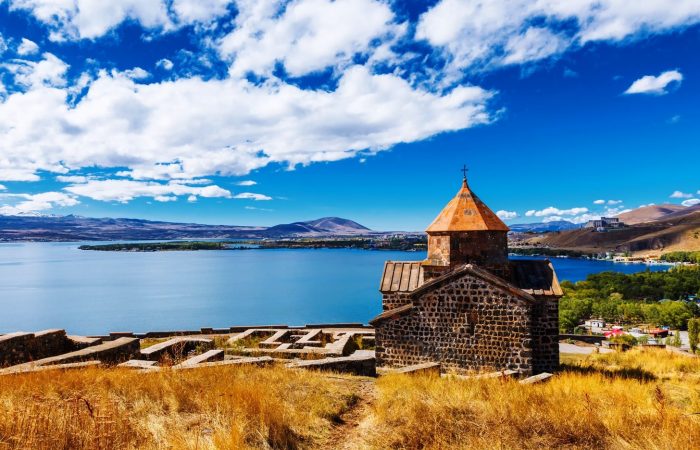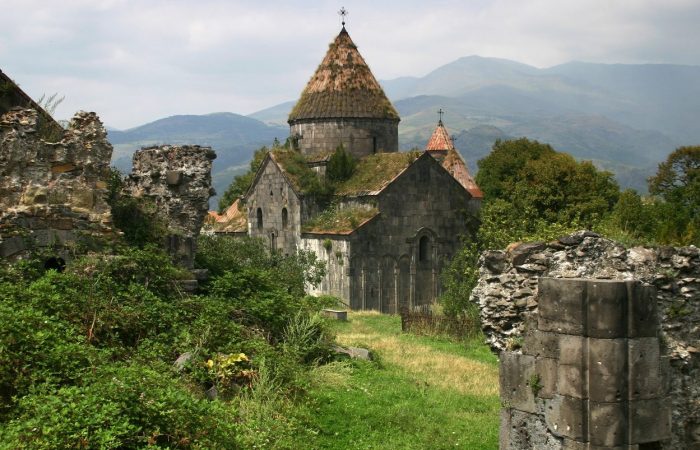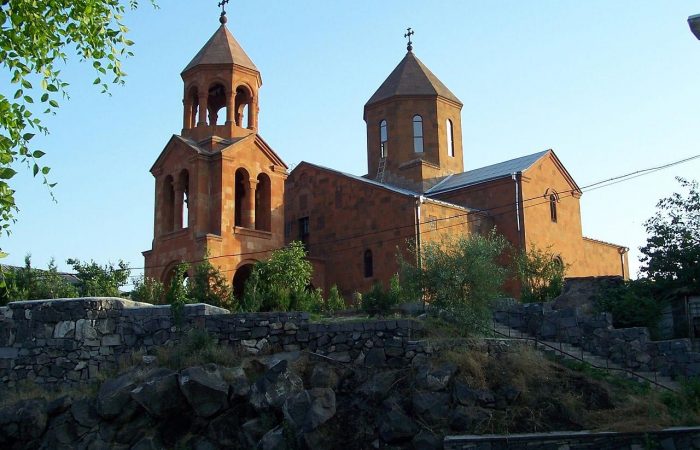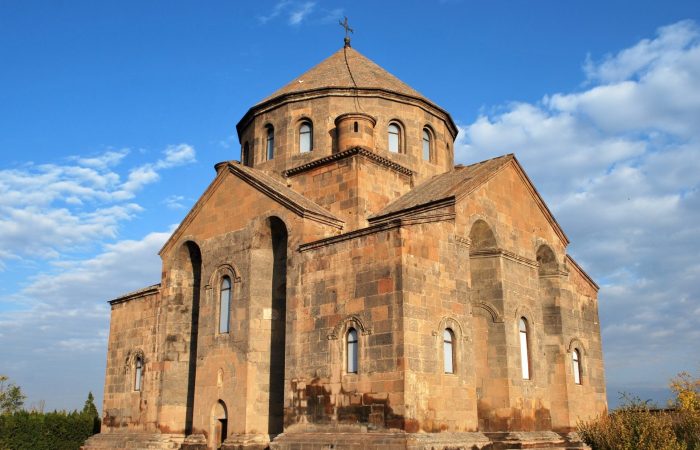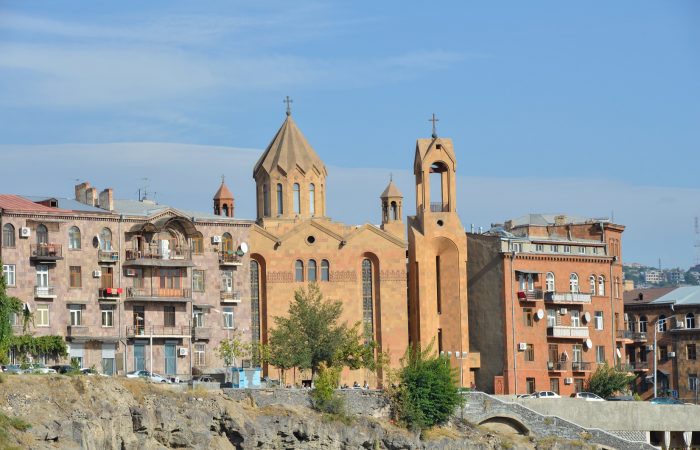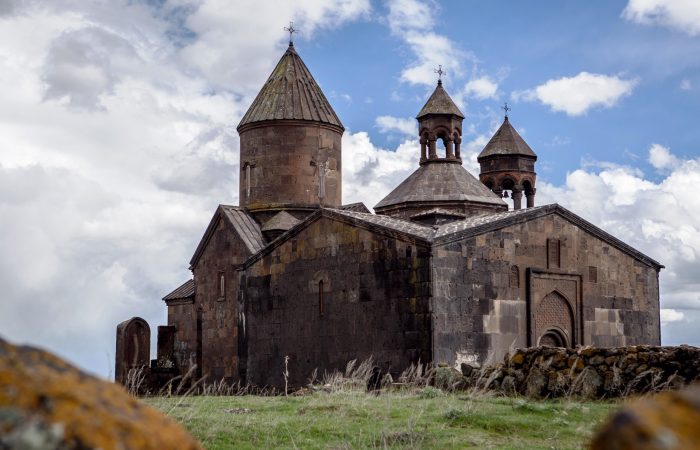Khosrov Forest State Reserve: General and Location
Because of its course of development as well as upon people’s personal choice the reserve is equally referred to as Khosrov State Reserve, Khosrov Forest and Khosrov Reserve. It’s located in Ararat province, to the south-east of Yerevan.
The reserve covers an area of 23,095 ha out of which 9000 ha are forested. On the whole, it’s comprised of four main districts – Garni (north), Kakavaberd or Geghi Fortress (north-east), Khosrov (center) and Khachadzor (east).
The reserve’s fluvial network includes two rivers. They are Azat and Vedi rivers both of which start from Geghama Mountains (Ghegham Ridge).
Khosrov Forest State Reserve: History
The reserve has a history of 1700 years and is believed to be founded by Armenian King Khosrov Kotak (Kotak means small) in 334-338. The reason standing behind the decision to establish the forest was to improve the natural conditions of Artashat and Dvin and adjacent territories as well as to conserve and enrich the species of flora and fauna. Back then Artashat was the capital of Armenia. Among other goals were to establish a ground for royal hunting, military exercises and entertainments. Note that the hunting animals were brought mainly from Persia.
Khosrov Forest State Reserve is not the only thing bearing the king’s name. His name was also given to Khosrov Settment, Khosrov River and Khosrovasar Mountain.
Historical evidence regarding the reserve was found in the writings of Armenian historian Pavstos Byuzand. According to him, there were initially two forests. One of them was called Tachar Mayri – it lay in between Garni temple (started from there) and Dvin city, and the other one was called Khosrovakert – it lay between the cities of Artashat and Dvin. Tachar Mayri is translated as “Sacred Forest,” and Khosrovakert means “established/founded by Khosrov.” With years and centuries passing by, the forest of Khosrovakert evanesced, and there remained only the Sacred Forest. The latter was then merged with the natural forest.
The forest was announced a reserve zone in 1958 by the Government of the Soviet Armenia (then Armenia was a Soviet Union country). The goal of the reserve was once again clarified and it goes as follows – “The purpose of Khosrov Forest State Reserve is the protection of Azat River resources, juniper and oak, arid mountain vegetation, rare animals and plants.”
Khosrov Forest State Reserve: Ayrarat State and Significance
Within the period falling between 331 BC and 428 AD Armenian Kingdom was known as Greater Armenia (Mets Hayk), which consisted of 15 states. One of those states was Ayrarat. The current territory of the reserve was once part of that state. It is important to mention this fact because throughout its existence the state of Ayrarat was Armenia’s leading cultural, economic and political center. What did its significance lie in?
- The Silk Road passed through the state, and the reserve. In case you don’t know, the Silk Road represented an inter-regional trade way (7000 kilometers), which connected China with Central Asia and Europe. It used to operate from the 2nd century BC to the 16th century AD.
- The majority of Armenian capitals were located in this state. Among them were Armavir, Yervandashat, Artashat, Vagharshapat, Dvin, Kars and Ani.
- The present capital of Armenia, Yerevan was established in Ayrarat State in 782 BC. Back then it was known as Erebuni. Erebuni-Yerevan is one of the oldest cities in the world.
- The Mother See of Holy Ejmiatsin was also located in the state.
Khosrov Forest State Reserve: Landscape
A variety of landscapes is noted in the reserve. They range from semi-desert to mountainous and alpine meadows. The majority of the area is covered with various types of symbiosis of high mountainous zone (64 percent). Forests make up 16 percent; lawns, bushes, thickets and sparse forests 20 percent.
The landscape varieties are explained by the following facts:
- Changes of relief forms,
- Slope positions,
- Declivities (downward slopes),
- Mountain rock compositions,
- Micro-Climate conditions.
Khosrov Forest State Reserve: Climate
The climate is usually dry continental. The weather is very hot during summers and cold during winters.
Khosrov Forest State Reserve: Flora
The reserve houses 1849 species of vascular plants. Over 80 species can be found in the red Data Book of Armenia. Out of the species introduced in the reserve 24 are endemic. On the whole, the flora species are divided into the following “categories:”
- Trees,
- Bushes/Shrubs,
- Small Bushes/Shrubs,
- Semi-bushes/Semi-shrubs,
- Lianas.
The reserve’s flora is represented by pear trees, various species of Asteraceae, Poaceae, Fabaceae, Lamiaceae, Brassicaceae, Caryophyllaceae, Rosaceae, Apiaceae, Scrophulariaceae, Boraginaceae, Liliaceae, Chenopodiaceae, Ranunculaceae, Rubiaceae, Cyperaceae, Orobanchaceae, Artemisia fragrans, Merendera trigyna, Tulipa biflora, Ornithogalum, Gagea, Iris elegantissima, Ixiolirion montanum, Capparis spinosa, Acantholimon, Astragalus, Thymus kotschyanus, Juniper, Oak, Acer ibericum , Celtis glabrata, Amygdalus fenzliana, Rhamnus pallasii, Lonicera iberica, Viburnum lantana, Rowan Trees and so on.
Khosrov Forest State Reserve: Fauna
The number of invertebrate fauna comes close to 1500 species, while the number of vertebrate species makes up 283.
The title of the most diverse invertebrate fauna respresentative is awarded to the insect fauna, which is presented with 1427 species. Other than that, the invertebrate fauna includes 3 species of scorpions and 62 species of mollusks.
The vertebrate fauna is presented with mammals, reptiles, amphibias, fish and birds.
Mammals – Insectivora , Chiroptera , Lagomorpha, Rodentia , Carnivora, Artiodactyla (Even-toed), Brown bear, Wild swine (Sus scrofa), Wolf (Canis lupus), Fox (Vulpes vulpes), Badger (Meles meles), European hare (Lepus europaeus), Crocidura gueldenstaedti, Meles meles, Martes foina, Common hedgehog, Hystrix indica, Felis lynx, Pantera pardus, Ovis orientalis.
Reptiles – Laudakia caucasia, Darevskia raddei, Darevskia nairensi, Ophisops elegans, Lacerta strigata, Lacerta media, Pseudopus apodus, Eremias Pleskei, Eremias strauchi, Ablepharus bivittatus, Anguis fragilis, Trachylepis septemtaeniata, Eumeces schneideri, Typhlops vermicularis, Eirenis collaris, Eirenis punctatolineatus, Hidrophis schmidti, Vipera/Montivipera/raddri, Eryx jaculus, Coluber ravergieri, Columber nummifer, Elaphe sauromates, Vipera eriwanensis, Macrovipera/Vibera/lebetina, Telescopus fallax, Elaphe hohenackeri, Rhynchocalamus melanocephalus satunini.
Amphibias –Rana ridibunda, Bufo viridis, Rana macrocnemis, Hyla savignyi, Swamp tortoise, Caspian turtle, Testudo graeca.
Fish – Salmo trutta fario, Capoeta capoeta, Barbus lacerta cyri, Alburnus filippi, Alburnus alburnus hohenackeri, Alburnoides bipunctatus, Sabanejewia aurata, Nemacheilus angorae, Barbatula barbatula caucasica.
Birds – The reserve includes 192 species of birds:
- 63 species – Birds permanently living in the forest.
- 83 species – Nesting and migrating birds.
- 83 species – Birds found during spring and fall period.
- 11 species – Wintering birds.
- 10 species – Itinerant birds appearing in the reserve only during nesting period.
- 5 species – Accidentally appeared birds.
Some of the birds worth noting are Melanocorypha bimaculata, Calandrella brachydactyla, Galerida cristata, Bucanetes mongolicus, Bucanetes githagineus, Rhodopechys sanguineus, Oenanthe isabellina, Oenanthe finschii, Perdix perdix, Coturnix coturnix, Bearded griffon (Gypaetus Barbatus), Neophron percnopterus, Gyps fulvus, Gypaetus barbatus, Aegypius monachus, Buteo rufinus, Aquila chrysaetus, Falco tinnunculus, Falco peregrinus, Falco biarmicus (most rare in Armenia), Phylloscopus collubita, Erithacus rubecula, Monticola solitarius, Sitta tephronota, Sturnus roseus, Petronia petronia, Bubo bubo, Apus melba, Eremophila alpestris, Anthus spinoletta, Anthus pratensis, Saxicola rubetra, Oenanthe oenanthe, Carduelis flavirostris.
Summing up there is also a small waterfall in the reserve, which cannot be compared with the waterfalls many of you might have seen but it adds to the overall beauty and mystery of the state reserve.
The reserve is presently under state ownership.






